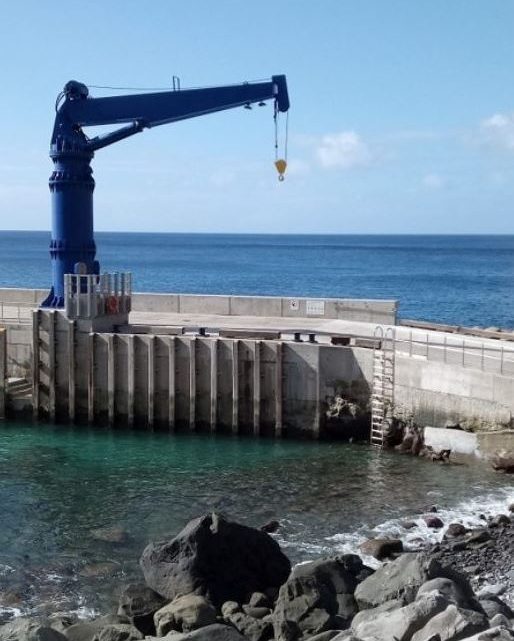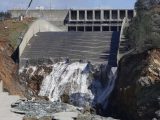
Why do we use Large Stones in Construction
24 December 2019Table of Contents
Why do we use Large Stones in Construction
Stone has been used for many years to protect embankments, levees, river banks, and engineered features against erosion and in the construction of dams, breakwaters, and other large structures. Advantages over other materials and designs are often contingent on low cost of large-scale production and processing of stone and placement on the structure.
1. Slope Protection
a. Slope protection generally means the engineered feature composed of large-stone material constructed as a relatively thin overlay on a slope otherwise vulnerable to erosion. A bedding layer is usually included. The large-stone material is commonly called riprap. At the heart of some riprap design is the characteristic of physical flexibility. Riprap adjusts to minor flank erosion or undercutting and continues to function in its protective role.
b. One key consideration in slope protection is stone size, and the specifications for riprap should be detailed in regard to median size, gradation, and allowable tolerances. The cost advantage may be even greater where gradation requirements allow quarry-run material to be used. Even here, the importance of well defined specifications must be made clear since there are still limitations on oversize or undersize components that may require at least some separation processing.
At the other extreme from quarry-run material is riprap of narrow size range for manual placement in a keyed or fitted-stone arrangement. This labor-intensive and costly method of protecting slopes is practiced only rarely today but may be encountered in maintenance of features constructed years ago.
2. Training Structures
River training structures are relatively short, linear features constructed near the bank of a channel to control the pattern and velocity of flow. Examples are spur dikes and groins perpendicular to the bank and vane dikes more or less parallel. Rock training structures may be unzoned or earth-cored but are always designed for low cost, sometimes at the sacrifice of longevity. Groins are also used along coastlines to control sea drift currents and sand deposition. Coastal jetties train the flow of river outlets and may secondarily function as groins and breakwaters.
3. Retention Dikes
Retention dikes are designed to impound saturated materials such as from dredging. Elaborate, zoned designs are sometimes used where the waste is contaminated and the stability and the control of leachates are of high priority. Where wave attack is predictable, two or more zones of large stone are commonly incorporated, with the most critical usually being the outer armor.
As designs prescribe larger and larger stones, the problems of quality and cost increase dramatically. Smaller sized stone materials are usually more than adequate to remain stable and support the superimposed layers. Emphasis may then be redirected from high-quality stone to quantity and the need to provide large volumes of core stone.
4. Breakwaters and Jetties
a. Large breakwaters and jetties provide the outstanding examples of construction with large stone. The term rubble mound, though somewhat entrenched in the technical literature, seems inappropriate to describe these engineered structures which are commonly designed with several massive zones of different materials.
The special demands for protection against ocean wave attack lead to the ultimate among numerous possible requirements, that is very large, dense, and durable individual stones. At some large size, different for each project, the cost of constructing armor with stones exceeds that of construction with man-made concrete units such as tetrapods and dolosse. For projects near this cutoff, an especially thorough investigation of stone sources is needed. Quarries at great distance are often included, and the cost of transportation and handling must be estimated carefully.
b. Structures in deep water present special construction problems. Placement is partly remote and obscure so that quality control, quality assurance, and measurement for payment are comparably more difficult than in construction above water.
5. Zoned Embankments
a. Construction of zoned rockfill dams has constituted the largest use of large stone in some CE districts. The demands regarding material quality are usually different than for rubble mounds or even for retention dikes, and
weak rock can be used. Instead, the focus is on the immense volumes required.
b. Much of the stone material can come from excavations required as part of the project, particularly, excavations for spillways and outlet works. Quarries or stone borrow areas may be needed at least as supplementary sources. An accurate estimate of processing requirements is essential to assure sufficient volumes where suitable deposits are thin or otherwise in short supply or the material quality is marginal.
The attendant blasting, handling, and placement sometimes degrade some of the material and can cause shortfall in acceptable stone.
6. Other Uses
Other uses of large-stone material are subordinate as a group to those identified above. Nevertheless, special uses can be significant.
a. Energy Dissipators. Energy dissipators may be constructed from derrick stone placed in plunge pools to reduce erosion of foundation soil or bedrock. The high-energy environment may preclude long service life without
additions of fresh stone.
b. Structure Protection. Stone placed around the upstream end of a bridge pier is an example of protection of structures. Stone placed to stabilize and protect dikes or breakwaters primarily composed of concretefilled caissons is another example.
c. Masonry. Masonry construction is included in this manual for completeness. The high cost of this labor-intensive method largely disfavors its use today, but stone masonry still exists in CE structures and facilities and occasionally can be repaired with essentially new masonry construction.
Dimensional and cut stone for masonry are produced in a relatively few, specialized quarries.
d. Landscaping Stone. Landscaping stone is not part of an engineered structure or feature as such, but it essentially completes some CE projects. Guidance in selecting stone and in estimating or inspecting stone work for landscaping is potentially useful on a broad scale.








